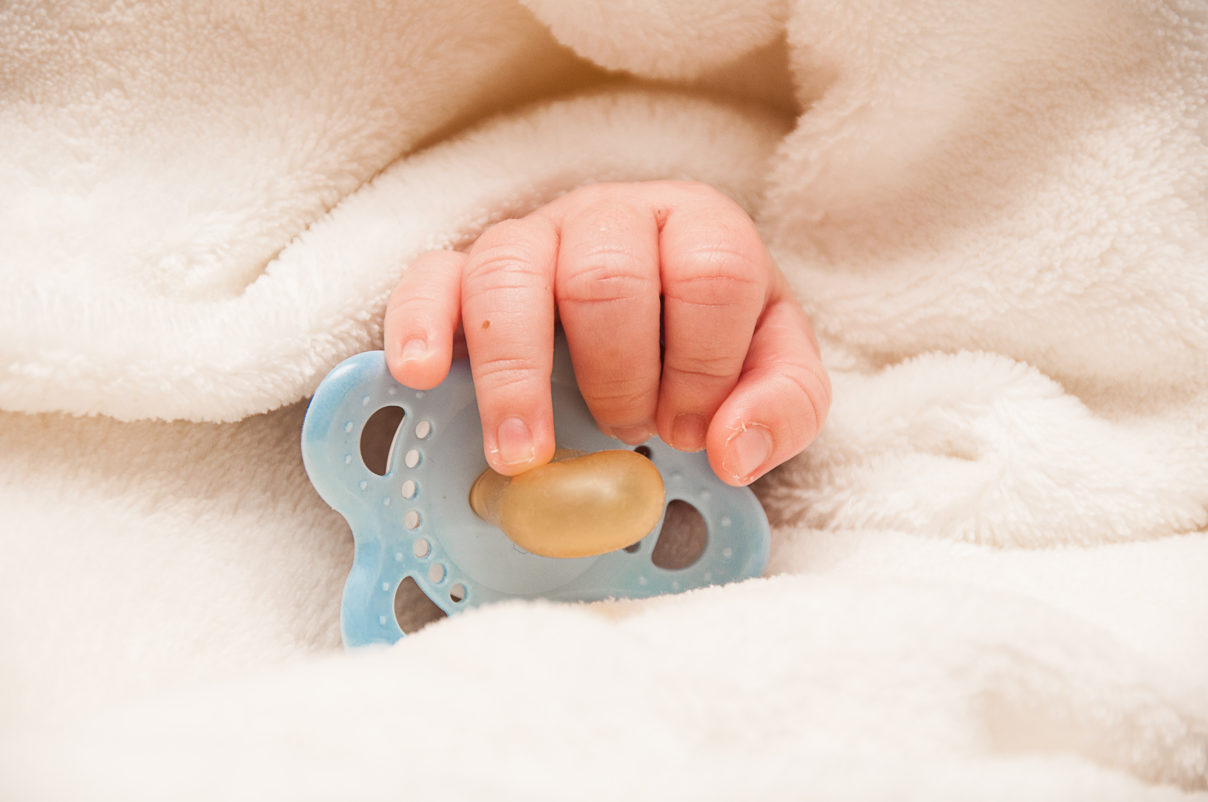Dummies
Dummies
One of the most common issues Health Professionals ask us about is the evidence relating to the use of dummies as a protective factor against SIDS, and whether parents should be advised to use a dummy.
As with many of the topics we discuss, there is no easy answer. The debate currently revolves around two primary questions – does dummy use reduce the risk of SIDS, and does dummy use negatively affect breastfeeding?

Does dummy use reduce SIDS risk?
Studies in the UK and elsewhere (Fleming et al., 1999; Li et al., 2006; Moon et al., 2012) have found that dummy use is associated with reduced SIDS risk – and some have suggested that this protective effect is quite large.
But the most recent UK SIDS risk study (Blair et al., 2009) found no association. In that paper the authors state that “…the dummy fell out of the infant’s mouth soon after sleep, casting doubt on the idea that the act of sucking affords protection. The fall in SIDS rate despite a fall in prevalence of dummy use does not support the hypothesis that dummies are directly involved in a potentially protective mechanism against SIDS.” (2009: 8)
Some studies have found that the protective effect of dummy use depends on whether one is regularly used, and particularly whether it was used for the last sleep. At least one study found a greater association with SIDS where a dummy is usually used, but is not used for the last sleep (McGarvey et al. 2003), suggesting that if parents start using a dummy they must always use it.
Two studies (Li et al., 2006, Moon et al., 2012) made waves in the media by claiming very large (90% and 70% respectively) reduction in SIDS risk for babies using dummies compared to babies not using dummies. The latter is a reanalysis of data from the Chicago Infant Mortality Study (conducted between 1993 and 1996 in a population with one of the highest SIDS rates in the US). These studies suggested that dummy use might decrease the risk associated with other high-risk environments, including prone sleep, and co-sleeping with a smoking mother, and concluded that dummies could potentially reduce SIDS risk for all infants, but might be especially helpful for high risk infants.
It is important to recognise, however, that the association found in studies between dummy use and reduced SIDS risk is not evidence of a causal link, and no ‘dose-response’ effect has been identified. It is not known how dummies might reduce SIDS risk.
Some theories (Li et al., 2006; Horne et al., 2010) suggest they prevent babies from turning their face into bedding (thereby reducing the risk of overheating, rebreathing, or suffocation), or that their use alters infant cardiovascular function, or sleep architecture. Some of these theories invoke the same mechanisms that have been put forward to explain why breastfeeding reduces SIDS risk.
Some research suggests that parents who use dummies may spend more time attending to their infants at night, so infants may be less likely to be left alone; the benefits therefore may be attributable to the same mechanisms that make room-sharing protective (Mee et al., 2007).
The reduction in risk apparently conferred by dummy use may in fact reflect other factors present in parents or environments where pacifiers are used.
Does dummy use negatively impact upon breastfeeding?
Some studies (e.g. Fleming et al., 1999) have found that dummy use can lead to less breastfeeding and earlier weaning from the breast. One review of research (Jaafar et al., 2012) found dummies did not cause mothers to stop breastfeeding earlier (up to when their babies were 4 months old) when they were very keen to breastfeed. But they were not able to say whether less motivated mothers might be disadvantaged by dummy use.
Breastfeeding in itself reduces the risk of SIDS (Vennemann et al., 2009; Hauck et al., 2011), along with other diseases, and helps with mother-baby bonding.
Recommendations to parents
Because of the strong protective effect found in some studies, some authorities (e.g. American Academy of Paediatrics (AAP)) suggest that parents use or consider using a dummy when settling their baby to sleep. The Lullaby Trust takes a cautious position with regard to SIDS risk, and state that ‘it is possible that using a dummy when putting a baby down to sleep could reduce the risk of sudden infant death’. They produce a factsheet to help parents make an informed choice regarding SIDS and dummy use.
In the US the AAP recognise the evidence is mixed, and that dummy use is associated with various other negative effects on infant health (links have also been found between dummy use and gastrointestinal and respiratory infections (North et al., 1999), and recurrent infections of the middle-ear (Rovers et al., 2008)). Their recommendation is to “consider offering a pacifier at nap time and bedtime” (AAP 2011). NHS Choices does not make a clear statement about SIDS and dummy use. The most recent UK research found that there was no increased risk of SIDS for babies who never used a dummy, but that if a baby was in the habit of sleeping with a dummy then they were at increased risk when they were without it.
Therefore if parents choose to give their baby a dummy they should do so consistently until their baby is around 6 months of age and past the peak age for SIDS.
